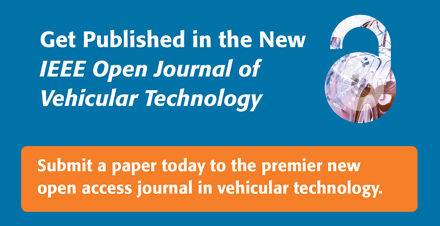Data Offloading Over Vehicular DTNs: City-Wide Feasibility Study in Nagoya
Authors: Takamasa Higuchi, Lei Zhong, and Ryokichi Onishi
Summary by Takamasa Higuchi:
A body of research has investigated the concept of data offloading over V2V communications - some of them employed GPS traces of public transport vehicles for network simulations, while some others conducted small-scale proof-of-concept experiments. However, road traffic in a city is largely comprised of privately owned vehicles, whose GPS traces are rarely available as a public dataset. This has made data offloading benefits in actual road traffic remain unclear in many aspects. We tackle this open question by coupling a V2V network simulator with a realistic road traffic simulation scenario, thoroughly calibrated with real-world traffic volume statistics in Nagoya, Japan. The simulation study, for the first time, unveils the quantitative performance of V2V data offloading in city-scale mixed road traffic consisting of both public transport and privately owned vehicles.
Full article: IEEE Open Journal of Vehicular Technology, Volume 5
Receiver Design for OFDM Schemes with Low-Resolution ADCs
Authors: João Madeira, Zahra Mokhtari, João Guerreiro, and Rui Dinis
Summary by Rui Dinis:
The digital implementation of most wireless receivers require accurate analog-to-digital converters employing high resolution quantizers to minimize signal distortion. However, high resolution quantizers can be complex and with significant power consumption. For these reasons, it would be desirable to employ reduced complexity quantizers, but this can lead to high nonlinear distortion effects and significant performance degradation. In this work we develop receivers that are able to cope strong nonlinear distortion, enabling the use of low resolution quantizers without compromising the detection performance.
Full article: IEEE Open Journal of Vehicular Technology, Volume 5
IM-OFDM ISAC Outperforms OFDM ISAC by Combining Multiple Sensing
Authors: Hugo Hawkins, Chao Xu, Lie-Liang Yang, and Lajos Hanzo
Summary by Lajos Hanzo:
OFDM has found its way into both the 4G and 5G systems, as well as Wi-Fi and other standards. It has also been investigated in the context of integrated sensing and communications known as ISAC. However, research is under way for enhancing its capabilities and index modulation (IM) is one of the promising exploratory avenues. Briefly, if for example only one out of four subcarriers of a subblock is activated, this allows the transmission of two extra bits and the power conserved by the deactivated subcarriers can be added to the activated one. The associated peak-to-average ratio is also investigated in the paper. However, no evidence is found in the open literature that IM-OFDM sensing is capable of outperforming OFDM sensing, because the blank subcarriers impair the system's sensing functionality. The existing solutions either insert a radar signal into the deactivated subcarriers, thereby using a radar signal for sensing, or employ compressed sensing, which leads to a lower sensing performance than that of OFDM ISAC. Hence, a novel low complexity algorithm is proposed by the authors for ensuring that IM-OFDM does succeed in outperforming its OFDM ISAC counterpart for both communication and sensing. The algorithm collects observations of the received signal to “fill in” the blank subcarriers in the sensing data created by IM-OFDM, whilst taking advantage of the increased subcarrier power attained by activating fewer subcarriers. This occurs over multiple transmit frames, which inevitably delays the target estimation. However, since sensing assumes low target velocities, this delay is shown to have a modest impact on the sensing performance of IM-OFDM.
Full article: IEEE Open Journal of Vehicular Technology, Volume 5
About the IEEE Open Journal of Vehicular Technology (OJVT)
The IEEE OJVT covers the theoretical, experimental and operational aspects of electrical and electronics engineering in mobile radio, motor vehicles and land transportation. A brief summary of these fields of interest are as follows:
- Mobile radio shall include all terrestrial mobile services
- Motor vehicles shall include the components and systems and motive power for propulsion and auxiliary functions
- Land transportation shall include the components and systems used in both automated and non-automated facets of ground transport technology

|